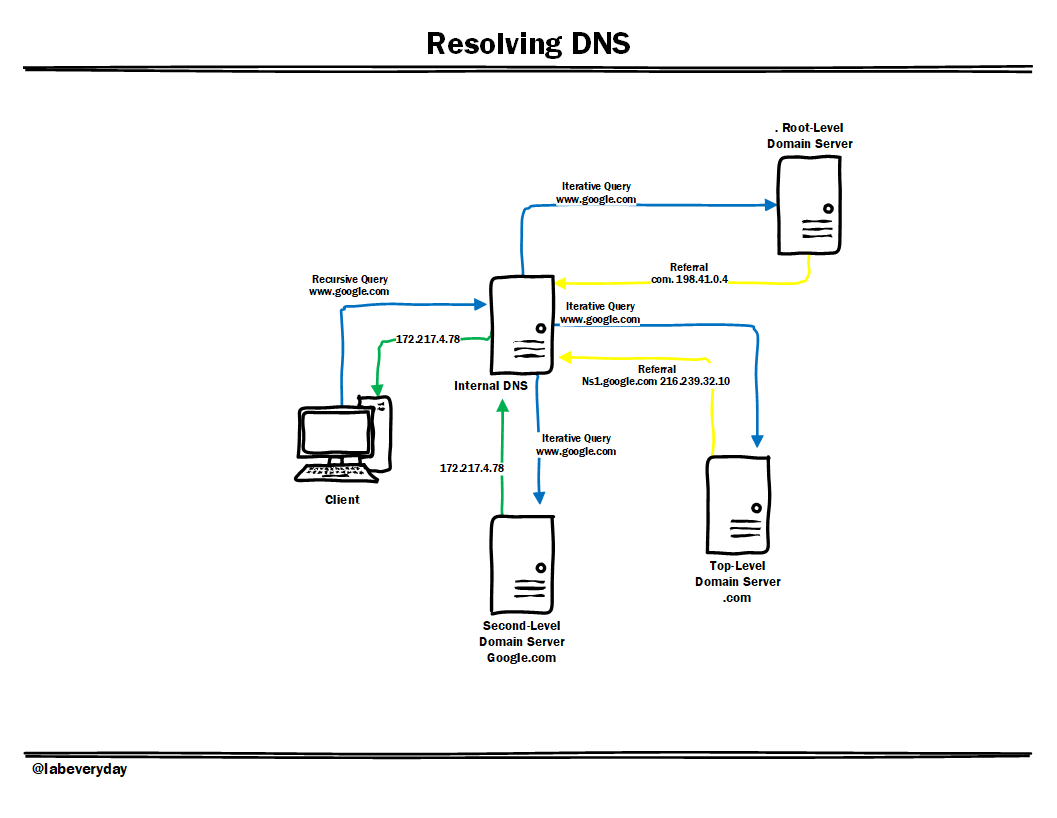Journey of a Google Search: From Keystrokes to Results
When you type https://www.google.com into your browser and press Enter, a fascinating series of events unfolds behind the scenes to deliver you Google’s home page. Let’s break down this journey:
1. DNS Request
First, your browser needs to find out where Google’s server is located on the internet. This is where DNS (Domain Name System) comes into play. Here’s what happens:
- Local DNS Cache: Your browser or your operating system might first check if it already has the IP address for Google cached from a previous search.
- DNS Query: If not found locally, your device sends a DNS query to your configured DNS server (often provided by your ISP or set manually to services like Google DNS or Cloudflare DNS).
- DNS Resolution: The DNS server searches for the IP address associated with www.google.com. This might involve querying multiple DNS servers until it reaches an authoritative name server for Google, which finally provides the IP address.
2. TCP/IP Connection
Once the IP address is known:
- TCP (Transmission Control Protocol): Your device initiates a TCP handshake with Google’s server to establish a connection. This involves:
- SYN (synchronize) packet from your device to Google.
- SYN-ACK (synchronize-acknowledge) from Google back to your device.
- ACK (acknowledge) from your device to Google, establishing the connection.
- IP (Internet Protocol): This part ensures that data packets can be routed from your device to Google’s server across the internet.
3. Firewall Interaction
- Outbound Firewall: Your personal firewall or network firewall checks if the outgoing connection to Google is allowed according to your security policies. If permitted, the request passes through.
4. HTTPS/SSL Handshake
Security is key when communicating on the internet:
- SSL/TLS Handshake: Your browser and Google’s server perform an SSL/TLS handshake to establish a secure connection:
- Exchange of cryptographic parameters.
- Agreement on an encryption method.
- Server authentication via certificates (your browser checks if Google’s server certificate is signed by a trusted Certificate Authority).
- Creation of symmetric encryption keys for the session.
5. Load Balancer
Google uses load balancers to manage server load:
- Load Balancer: Upon receiving your request, Google’s load balancer decides which backend server will handle your request based on load, server health, or geographic location, ensuring optimal performance and availability.
6. Web Server
- Web Server: The selected server receives your HTTP request. This server might be running software like Apache or Nginx to handle HTTP requests, process them, and prepare to serve content.
7. Application Server
- Application Server: Here, Google’s application logic comes into play. If you’re searching, your query would be processed:
- Parsing your query.
- Calling relevant services or microservices to handle specific aspects of search functionality.
8. Database
- Database Interaction: Although not all requests need database access, for many operations like search, Google might:
- Query its vast index of web pages stored in databases.
- Retrieve results, rank them, and prepare them for display.
The Return Journey
Once Google has processed your request:
- Response: The web server sends back an HTTP response with HTML, CSS, JavaScript, and possibly other resources.
- Back through the Load Balancer: Your response might pass through Google’s load balancer again.
- HTTPS Encryption: The data is encrypted before transmission back to you.
- TCP/IP: The response travels back via TCP/IP, through any firewalls, and finally to your device.
- Browser Rendering: Your browser decrypts the data, interprets the HTML, executes JavaScript, loads CSS, and paints the Google homepage on your screen.
This journey illustrates the complexity and coordination required for what seems like a simple web search, showcasing the intricate dance of internet protocols, security measures, and server-side technologies. Each step is crucial in ensuring that your request is handled efficiently, securely, and reliably.

This Post Has 0 Comments